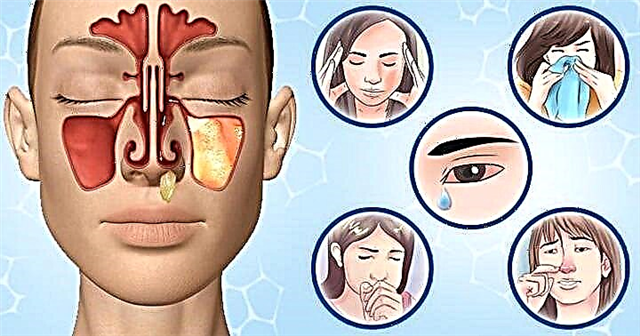Otitis media is one of the serious ear pathologies resulting from inflammation of the organ of hearing. Is it possible to wash with otitis media and go to the bathhouse? In most cases, with the development of an ENT disease, doctors recommend refraining from water procedures, due to the risk of complications.
At certain stages of the development of the disease, serous or purulent exudate begins to accumulate in the ear cavity. Warming up the ear in this case will only provoke the spread of the inflammatory process. Moreover, the leakage of water into the ear canal in the presence of perforations in the tympanic cavity leads to the ingress of moisture directly into the middle ear. This is fraught with even greater irritation of the mucous membranes and, accordingly, a deterioration in well-being.
Washing head

Can I wash my hair with otitis media? Many patients mistakenly believe that a hygienic procedure will certainly provoke complications in the development of otitis media. However, there is no categorical prohibition on shampooing. The danger is not the fact of the procedure itself, but the likelihood of water getting into the ear and a high temperature drop.
According to experts, with serous otitis media, you can wash your hair, but the water temperature should not exceed 40 degrees. If the hair is long enough, after the procedure, it is advisable to wipe it almost dry in order to exclude the possibility of water droplets from the ends of wet strands getting into the ear canal.
In the presence of acute inflammatory processes in the ear, you should refrain from bathing. In the case of expansion of blood vessels, the process of production of exudate in the ear is accelerated, which is fraught with perforation of the membrane.
Hygiene rules
The ingress of moisture into the inflamed ear aggravates the course of the disease and contributes to relapses at the stage of regression of catarrhal processes. To prevent a complication of the disease, bathing with otitis media is carried out taking into account several important rules:
- in the first few days after the onset of ENT disease, shampooing should be abandoned;
- while bathing, it is more advisable to take a shower, rather than a bath;
- the duration of hygiene procedures should not exceed 7-10 minutes;
- the temperature in the room should not exceed 25 degrees, and the humidity - 60%;
- to prevent water from entering the ear canal, use ear plugs, a silicone cap.

It is undesirable to use cotton turundas during the procedure. Cotton wool is a hygroscopic material, so moisture can seep through it into the ear.
Hygiene procedures for babies are more difficult to carry out, which increases the risk of water leaking into the ear. Experts recommend refraining from taking baths in favor of rubdowns.
Important! You can wash your hair only after 10 days from the onset of the development of ENT disease.
Bath visit
Many adherents of traditional medicine tend to exaggerate the healing properties of the bath. This is especially true for the treatment of otolaryngological diseases with heat at the stage of inflammation or suppuration.
Is it possible to go to the bathhouse for otitis media? The answer in this case is no.
Even with the development of exudative otitis media, which is not characterized by acute inflammation in the ear, it is advisable to refrain from going to the bathhouse or sauna.
The danger in this case is moisture and temperature differences in the room. Due to the high humidity in the external ear canal, water droplets form, which help wash out the sulfur. Sulfur, in turn, plays the role of a bacteriostatic barrier that prevents pathogens from entering the tympanic cavity.
In the absence of sulfur in the ear canal, the ear becomes more susceptible to disease-causing agents. Due to their penetration into the middle ear, the sterile transudate contained in the tympanic cavity can turn into pus. Purulent processes in the middle ear often lead to the development of conductive hearing loss and autophony.
According to most experts, otitis media and a bath are incompatible things. The atmosphere in the steam room is very aggressive due to the high temperature and humidity. When the body warms up, the blood vessels expand, which helps to relieve pain. However, at the same time, capillary permeability increases, which leads to the rapid spread of purulent foci of inflammation.
When is warming up useful?
Warming up, as one of the methods of treating ENT diseases, will be useful only at the stage of recovery. Experts do not exclude the possibility of ear warming up in the absence of transudate or pus in it, however, it is probably problematic to track the moment of their formation in the ear cavity. In particular, in children, otitis media develops very rapidly, while it takes only a few hours for the transition of the disease to the acute stage.
At the stage of recovery, experts advise using heating to improve blood circulation. However, for this purpose, only dry heat can be used, i.e. heating pad, compresses, blue lamp, etc. A local increase in temperature in a particular area of the body will accelerate blood microcirculation. This improves the trophism of tissues and the process of their regeneration.
Important! Warming up in the presence of cardiovascular diseases cannot be used in the treatment of otitis media.
If the procedure is carried out correctly, you can speed up the healing process, which is due to the following heating properties:
- acceleration of cellular metabolism;
- normalization of blood circulation in tissues;
- relief of pain syndrome;
- acceleration of the processes of epithelialization of the mucous membranes of the ear.
Dry heat treatment is best done before bedtime. It is very important to protect the patient from drafts and significant temperature changes after the procedure.
Prohibited procedures
Carrying out hygiene procedures is a necessity, therefore, even with otitis media, under certain conditions, you can take a shower and wash your hair. However, otolaryngologists categorically do not recommend visiting swimming pools and open bodies of water. What is the reason for this?
Inflammatory processes in the ear mucosa lead to loosening of the epithelium, as a result of which it becomes more vulnerable to irritants, which include not only pathogens, but also water. The ingress of sea water or chlorinated water into the ear in the presence of perforated holes in the membrane leads to the development of allergic reactions.
Edema of tissues, provoked by allergies, prevents the evacuation of exudate into the external auditory canal. In this regard, the fluid enters the ear labyrinth, from where it can seep into the skull and provoke the development of meningitis. If damaged the inner ear malfunctions are observed not only in the auditory analyzer, but also in the vestibular apparatus. The manifestations of violations will be:
the inner ear malfunctions are observed not only in the auditory analyzer, but also in the vestibular apparatus. The manifestations of violations will be:
- dizziness;
- impaired coordination of movements;
- nausea and vomiting;
- a sharp decrease in hearing;
- noise in ears;
- shooting pains.
And even after recovery, doctors recommend refraining from swimming in water, which is due to the risk of relapse. Draft and cold air can cause ear inflammation. Moreover, diving under water increases the external pressure on the ear membrane, which is fraught with its repeated perforation and the development of complications.
Ear rinsing
Despite the fact that the bath is contraindicated for otitis media, rinsing can be performed to speed up the healing process. Regular toilet of the external auditory canal will speed up the process of tissue regeneration and, accordingly, recovery. Before carrying out the procedure, you need to consider the following nuances:
- in the presence of serous exudate in the external passage, it is removed with a cotton swab;
- draw 1 ml of hydrogen peroxide into a syringe;
- put the syringe in warm water for 5 minutes to warm up the liquid;
- lying on your side, inject hydrogen peroxide into the ear canal of your sore ear;
- after 2-3 minutes, stand up so that the liquid flows out of the ear.
Important! During the procedure, do not pull the ear or press on the tragus.
Before applying the procedure, you should consult a specialist. It is absolutely impossible to rinse in the presence of perforated holes in the ear membrane.



